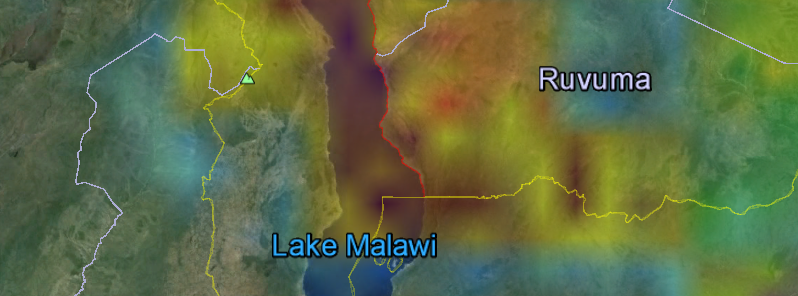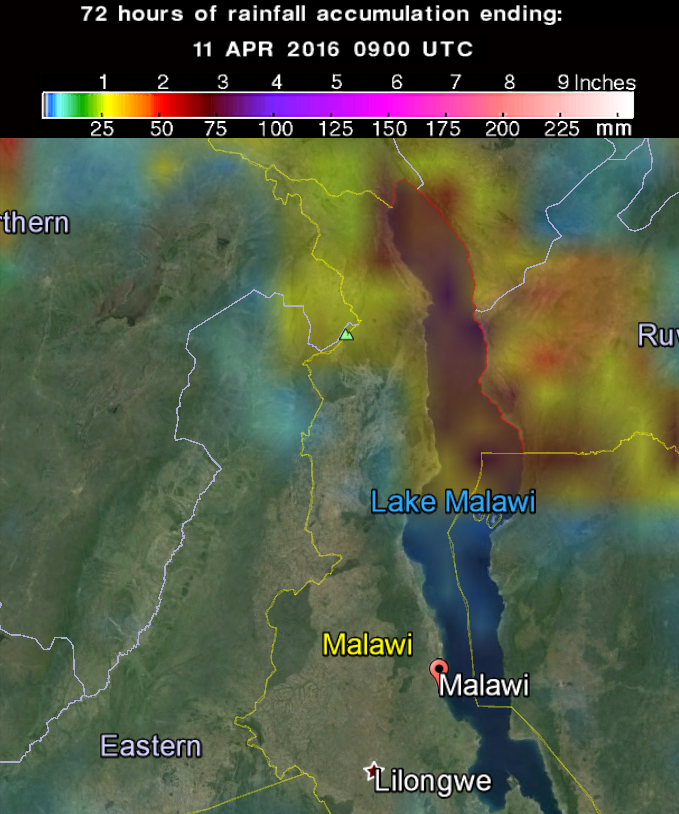Severe flooding hits Malawi

After days of severe rainfall, the northern and central parts of Malawi suffered catastrophic flooding. Hundreds of people were displaced, as their homes collapsed under severe weather conditions. Traffic was severely disrupted, and at least ten people are feared dead.
Numerous areas in the Karonga District, Northern Region reported heavy rainfall. 143 mm (5.6 inches) was recorded in a 24 hour period on April 6, 2016, in Ngosi. At the same time, 125 mm (4.9 inches) was observed in Mwenilondo, 120.5 mm (4.7 inches) in Mwenetete, 103.6 mm (4 inches) in Mwaulambo and 85 mm (3.3 inches) in Chinsewe, according to Malawi Meteorological Service.
Baka reported 80.5 mm (3.2 inches) of rainfall, Karonga Airport 76 mm (2.9 inches) while Lupembe and Nyungwi recorded 51 and 44.5 mm (2 and 1.8 inches), respectively. In the same period, Mzuzu observed 25.9 mm (1 inch), Chitipa 25.6 mm (1 inch), Chintheche 19.9 mm (0.8 inches) and Nkhotakota 14.1 mm (0.5 inches).

72-hr accumulated rainfall as observed by GPM Core Observatory. Image credit: Google/NASA/JAXA GPM
Kabale Lyamayolo measured 86.5 mm (3.4 inches), Mwenilondo 61 mm (2.4 inches), Chisewe 42 mm (1.6 inches) and Nkhatabay 40 mm (1.6 inches) on April 7, while Meru and Njalayankhunda recorded 38 and 31 mm (1.5 and 1.2 inches) at the same time.
‘Flood victims need help’ – Karonga DC https://t.co/2WlcucHFPT pic.twitter.com/L2daUtgb1O
— IG: OfficialMalawi24 (@Malawi24) April 8, 2016
In Mzuzu, two people died after a wall of their house collapsed, according to Malawi Broadcasting Corporation. Capital FM Malawi station reported that families from more than 958 homes in Karonga have been relocated after the floods ravaged the area and left over 70 families homeless.
Relief aid for flood victims seems to have been fairly limited for now, according to Rosemary Moyo, the District Commissioner for Karonga: "We are worried that no organisation has come in to assist us as people who have been affected lack a lot of things."
The northern areas of the country and areas around Lake Malawi can expect further heavy rainfall over the next couple of days, according to the Department of Climate Change and Meteorological Services.
Featured image: 72-hr accumulated rainfall as observed by GPM Core Observatory. Image credit: Google/NASA/JAXA GPM

Pilirani from south Africa, sorry to all people in northern region.God is in control..